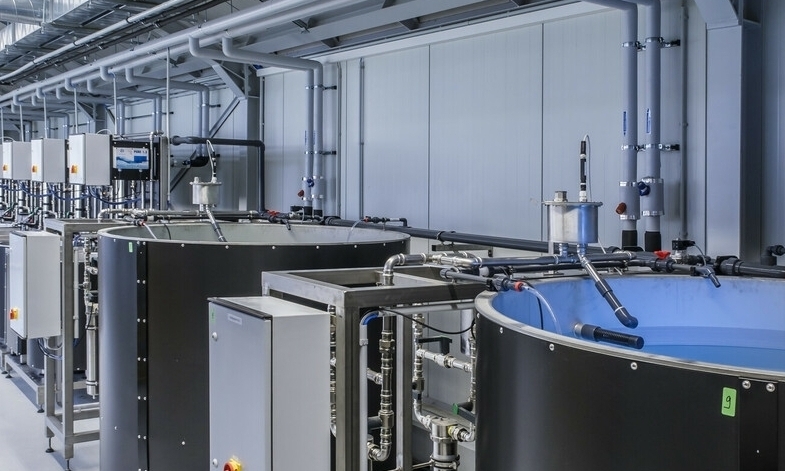The importance of aquaculture in the global supply of fish and seafood continues to grow. In fact, human consumption of aquaculture products exceeded consumption of wild fish for the first time in 2014. Fish feed that is used in commercial fish farming already contains a significant proportion of plant raw materials. It is therefore important to understand the potential for pesticide residue transfer from fish feed into edible issues from farmed fish. In the EU, fish metabolism studies are required as part of the regulatory approval of pesticides, if treated crops are used as raw material in fish feed to assess the risk of residues being carried over to edible tissues.
Fish Metabolism Studies for Safe Food
Fish metabolism data quantify total residues and characterise the chemical nature of residues which may occur in edible tissues of fish exposed to pesticides. Such studies are required when pesticide use may lead to significant residues of an active substance or a major metabolite in the total diet which also have the potential to accumulate (considered where the logarithm of the n-octanol/water partition coefficient (log Pow) is > 3). Fraunhofer IME, together with representatives from regulatory authorities and the industry, developed a test concept for carrying out fish metabolism studies. The related EU Commission working document on »Nature of pesticides residues in fish« was published in 2021 (SANTE/10254/2021).
Fraunhofer Facility for Fish Metabolism Studies
Part of the research facility for aquaculture studies in Schmallenberg are two modern stainless steel flow-through systems providing the technology to carry out fish metabolism studies with animals up to marketable size. Experiments can be performed under flow-through conditions in large tank units (2m³). All tanks are equipped with strong filter systems to avoid the accumulation of dissolved test substances and excreted metabolites in the water during the metabolism studies. The test system meets all quality and safety requirements for registration studies using 14C-labeled compounds. Common carp (Cyprinus carpio) and rainbow trout (Oncorhynchus mykiss) are available as test organisms. Stabilized experimental diets enriched with radiolabeled test substances can be prepared on site. Sample preparation and analytical investigations are carried out at Fraunhofer IME, Schmallenberg. State-of-the-art analytical equipment is available for the detection and identification of pesticide metabolites, including radio-HPLC, LC/MS and NMR technology. Fraunhofer IME offers testing adhering to GLP (Good Laboratory Practice) principles.
Dietary Burden Calculation
The European pesticide regulation requires fish metabolism and fish feeding studies where residues in fish feed exceed 0.1mg kg−1 of the total diet (dry weight basis) to enable the setting of appropriate maximum residue levels in fish commodities. Fish dietary burden calculation is therefore an important prerequisite to decide on further experimental testing as part of the consumer risk assessment. The software DietaryBurdenCalculator developed by Fraunhofer IME allows the determination of the worst case feed composition made of plant derived feedstuffs. This is the composition leading to the maximum dietary burden of pesticide residues. The principles of dietary burden calculation for fish are described in the EU Commission Working Document SANTE/10250/2021.
Magnitude of Pesticide Residues in Fish
Studies on the magnitude of residues in fish are conducted in order to quantify levels of residues in fillet (incl. skin), liver and carcass of fish and are carried out in accordance to EU Commision Working Document SANTE/10252/2021 using experimental diets spiked with non-radiolabeled test compounds. Studies can be performed at Fraunhofer IME under GLP conditions.
Innovative Research Facility for Aquaculture Studies
In recirculating aquaculture systems (RAS) the culture of fish takes place in tanks. The holding water is cleaned in an integrated water treatment system and then recycled back into the holding basin. The use of circulation technology enables a significant reduction in water consumption compared to conventional continuous flow systems. However, the low exchange rates also lead to a potential accumulation of organic substances, feed additives, substances for water treatment, as well as active ingredients which are applied to the circulation system.
A globally unique RAS research facility is available at Fraunhofer IME, which enables the investigation of the physico-chemical and biological processes in RAS systems. The system made of stainless steel consists of seven individual circuits and allows the use of 14C-labeled substances. This enables valuable information to be obtained on the whereabouts of feed-borne and biogenic substances under typical aquaculture conditions. The research facility can thus help to optimize the composition of fish feed and the properties of feed additives, improve the cleaning performance of recirculation systems and thus support the development of products that offer a high degree of safety for consumers and the environment. The new RAS system can run in fresh and salt water mode. The rainbow trout (Oncorhynchus mykiss) and further types of fish can be used for the feeding experiments.
Sample Analysis
Our modern analytical instruments enable us to quantify the test compounds in different fish tissues and water samples collected during the studies. The combination of highly specific analytics and isotope-labeled compounds enables the identification of the metabolites of organic substances.
 Fraunhofer-Institut für Molekularbiologie und Angewandte Oekologie IME
Fraunhofer-Institut für Molekularbiologie und Angewandte Oekologie IME